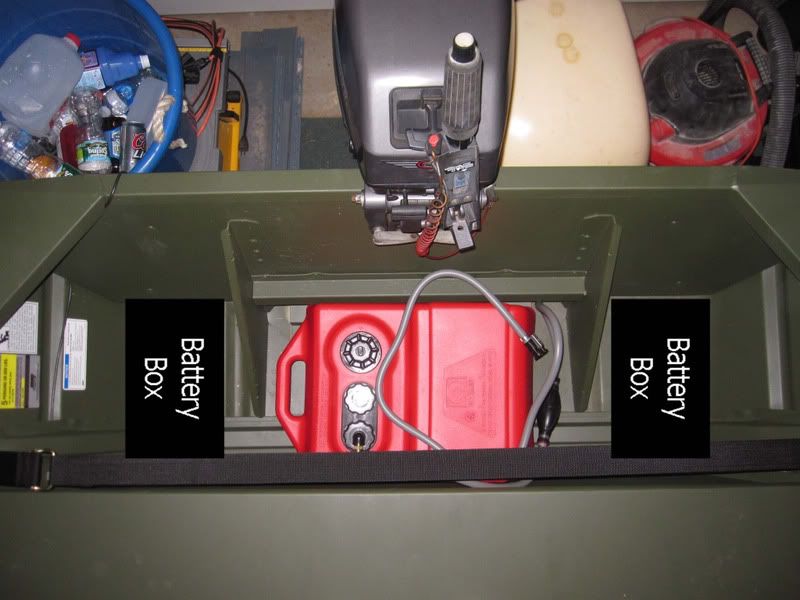Jay415
Well-known member
I want to have 2 batteries for my bow TM and a perko switch selector. My plans were to have the batteries as in the picture and mount the switch and breaker on the starboard transom or the rear of the seat. I was gonna wire positive from each battery to the switch and output to a 60 amp breaker then to TM. My concerns are with short/arc protection of a 4' positive run from the port battery with no breaker or fuse? How should I wire this up? Could I wire one 60amp breaker at each battery then to the switch and output to TM? How would it handle when switch was set to "all"? Would it take 120amp draw to trip the breakers? What's the best way to handle this? Do I need 3 breakers? (1 at each battery and a 3rd at the switch output to protect the TM) I really don't feel comfortable with such a long run if a wire gets accidentally nicked or something. I'd rather not set my boat on fire! :lol: Thanks! These 2 batteries will run a bow mount TM only with 6 gauge ran to the motor. I'm trying to keep wiring as simple as possible. I was also considering using 2 Minn Kota power centers ran to the selector switch, but again that would be the 2 breakers and the 120 amp question when switch was set to "all". Here is the power center. https://www.amazon.com/MinnKota-Trolling-Motor-Power-Center/dp/B001PTHKMG



